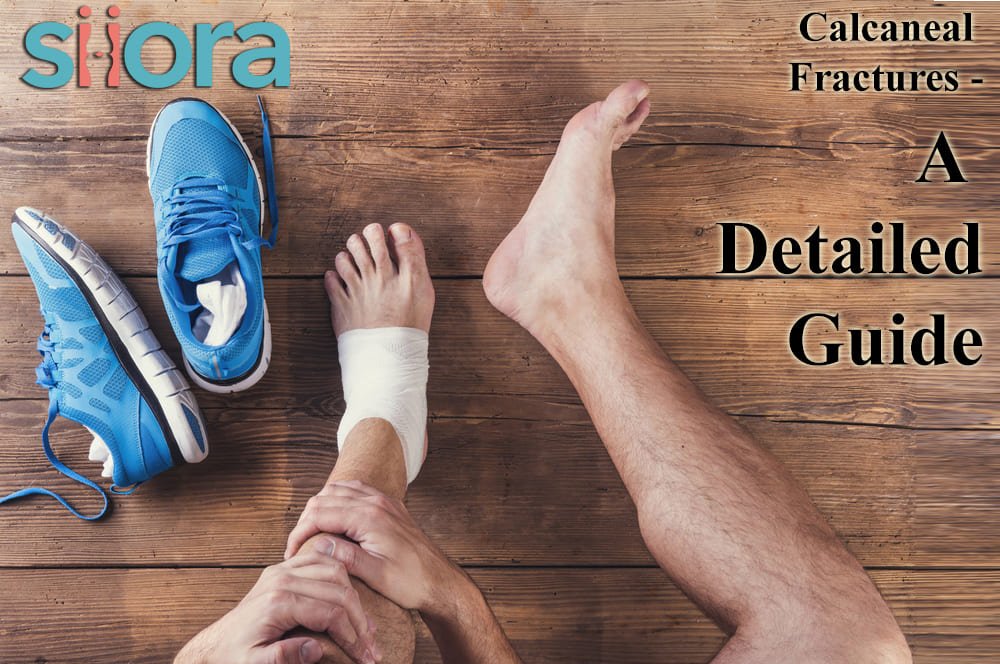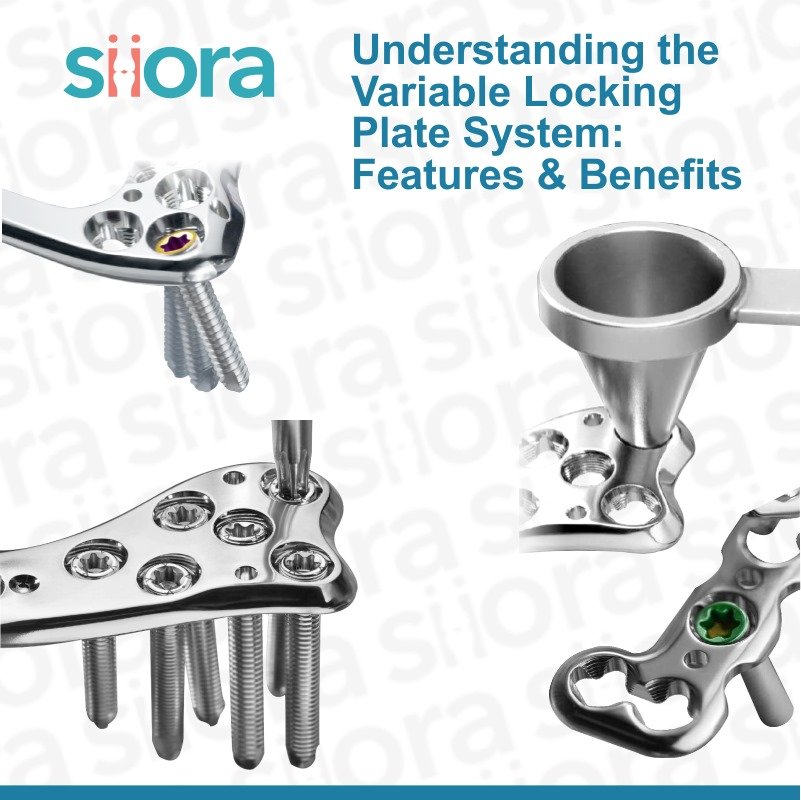“Fracture,” a term that everyone fears, but unfortunately, it is counted among the commonest injuries that are seen in people. Everyone irrespective of age and gender is prone to get a fracture at least once in their life. Whether major or minor, most of us might also have experienced it once.
There are 206 bones in a grown-up adult, and fracture could occur in any of them. All this depends upon the cause of the fracture.
The fracture that we’re going to talk about in this post is “calcaneal fracture.” It is a term coined for a broken heel. The bone present in our heel is known as calcaneus, and that’s why the fracture occurring at this part is known as a calcaneal fracture. Let us dive deep into this condition step-by-step.
Calcaneus Bone– An Overview
Known as heel bone, the calcaneus is present just below the ankle and it extends to the back of the foot. It has a complex shape but plays a vital role during a walk. Calcaneus provides support while walking and connects calf muscles to the foot. This bone is known to bear the whole-body weight, and this is one of the reasons why it gets injured.
Calcaneal Fractures – A Brief Introduction
Heel bone fractures are known as calcaneal fractures and they are not so common but, when they occur, the condition is so painful and crippling. These types of fractures could occur either through the weight-bearing joint or outside it. In certain cases, calf muscles that connect to the heel bone also get damaged due to the break, and in those cases, muscles can pull the broken bone pieces near the skin leading to skin complications. Such conditions require an ER visit.
A burst fracture of the heel bone is also known as “Lover’s Fracture.” This is because such types of fractures resemble an injury where a suitor jumps off the lover’s balcony to evade and prevent being seen by anybody. These types of calcaneal fractures occur due to axial loading.
Causes of Calcaneal Fractures
These types of fractures occur when excessive force is applied to the calcaneus and crushes it. The conditions that may apply such forces include falling from a ladder or a height, automobile accidents, or crushing injuries. People between 30 – 50 years of age are more prone to getting their heels broken. Besides this, people with weak bones or those who are suffering from conditions like osteoporosis are also at risk of calcaneal fractures irrespective of age and gender. In the case of a calcaneal fracture, the bone breaks into multiple pieces, and it resembles an egg whose shell is broken.
Types of Calcaneal Fractures
The pattern of the break along with its cause defines heel bone fractures, and they are classified based on that information. Here are some of the common types of calcaneal fractures that may be noticed:
Intra-articular Fractures
These types of fractures are known to be the most serious types of heel fractures. This is because intra-articular fractures involve damage to the cartilages present between the joints, and that increases the chances of post-traumatic arthritis involving the joint.
Avulsion Fractures
These are the types of fractures that occur to the part where ligaments or tendons attach to the bone. When avulsion fractures occur in the calcaneus bone, the Achilles tendon or other ligaments may pull away a part of the broken heel bone.
Multi-Fragmented Fractures
Now, this is another serious situation that could be seen in the heel bone. In these types of fractures, the calcaneus breaks into multiple small pieces. These types of fractures occur due to high-energy accidents or crushing injuries. Multi-fragmented fractures are difficult ones to treat as it is not easy to realign the bones.
Stress Fractures
Though not so common, calcaneal fractures could occur due to repetitive stress on the heel bone over a long time. Such types of heel bone fractures are seen in sportspeople, weightlifters, gymnasts, wrestlers, and runners.
Symptoms of Heel Bone Fractures
Calcaneal fractures could cause severe and chronic complications like severe & sharp pain. Besides this, severe swelling and bruising are also on the cards. When the heel is broken, the person becomes unable to put weight, and if he/she does, it will be extremely painful. If the cause of the condition is a stress fracture, normal pain will be experienced that becomes worse with time. In such cases, pain is mostly associated with activity and improves with time.
Sometimes, the pain caused due to calcaneal fractures is intense enough that an emergency room visit is required. When it comes to bruising, it may or may not be present.
Diagnosis of Heel Bone Fractures
Radiological examinations are a must when it comes to the correct diagnosis of heel bone fractures. At first, the healthcare provider performs a physical examination and notices deformity around the injured heel along with swelling and bruising.
The radiological tests that are performed include:
X-ray
Multi-positional x-rays are ordered to visualize the fracture from all angles and ensure a correct diagnosis. The views obtained during x-ray examination include axial, lateral, and oblique.
CT-Scan
CT scan is known to be the commonest radiological test that is performed for the diagnosis of traumatic calcaneal fractures.
Bone Scan/MRI
These tests are ordered to diagnose stress fractures of the heel bone.
Treatment of Calcaneal Fractures
Calcaneal fractures are among those that are difficult to treat, and it completely depends upon the diagnosis.
Heel bone fractures are often multi-fragmentary, and hence, the treatment requires fixing of all. Calcaneus is bone with a hard shell and soft internal part, just like an egg. So, when a fracture occurs to this location, the bone shatters leaving multiple fragments. Therefore, such fractures are hard to treat.
It is often noticed that damage to the subtalar joint accompanies calcaneal fractures, and during the treatment, it needs to be repaired as well. This joint connects talus and calcaneus.
Now, if the fracture has not caused the displacement of the bone, it can be treated either with complete or partial immobilization. In some cases, a cast is applied to immobilize the fracture. Sometimes, closed reduction followed by a cast application may fix the fracture. Reduction is always done under anesthesia.
Heel bone fractures where multiple fragments are noticed during the diagnosis always require surgery to repair the bone. Such types of fractures may include comminuted fractures and intra-articular fractures. The surgery performed to treat calcaneal fracture varies from person to person as fracture patterns could also vary. Orthopedic implants like Locking Calcaneal plates and Orthopedic Screws are used to fix these types of fractures using open reduction and internal fixation.
Remember, surgery can only be performed after swelling has completely gone.
The recovery after the treatment will depend upon certain factors, and that includes the type of treatment, age of the patient, underlying health issues, and chronic medications. For better results, it is important to follow the post-surgical instructions given by the surgeon.
Siora Surgicals Pvt. Ltd. is a growing yet one of the oldest orthopedic device manufacturers in India with clients all over the world. It manufactures a huge array of CE-certified orthopedic implants, instruments, and external fixators including Locking Calcaneal Plates. Siora is an Indian-FDA-approved company with a well-established production unit based in the RAI District, Sonepat, Haryana. Above all, Siora is also a trustworthy and experienced OEM service provider across the globe.








